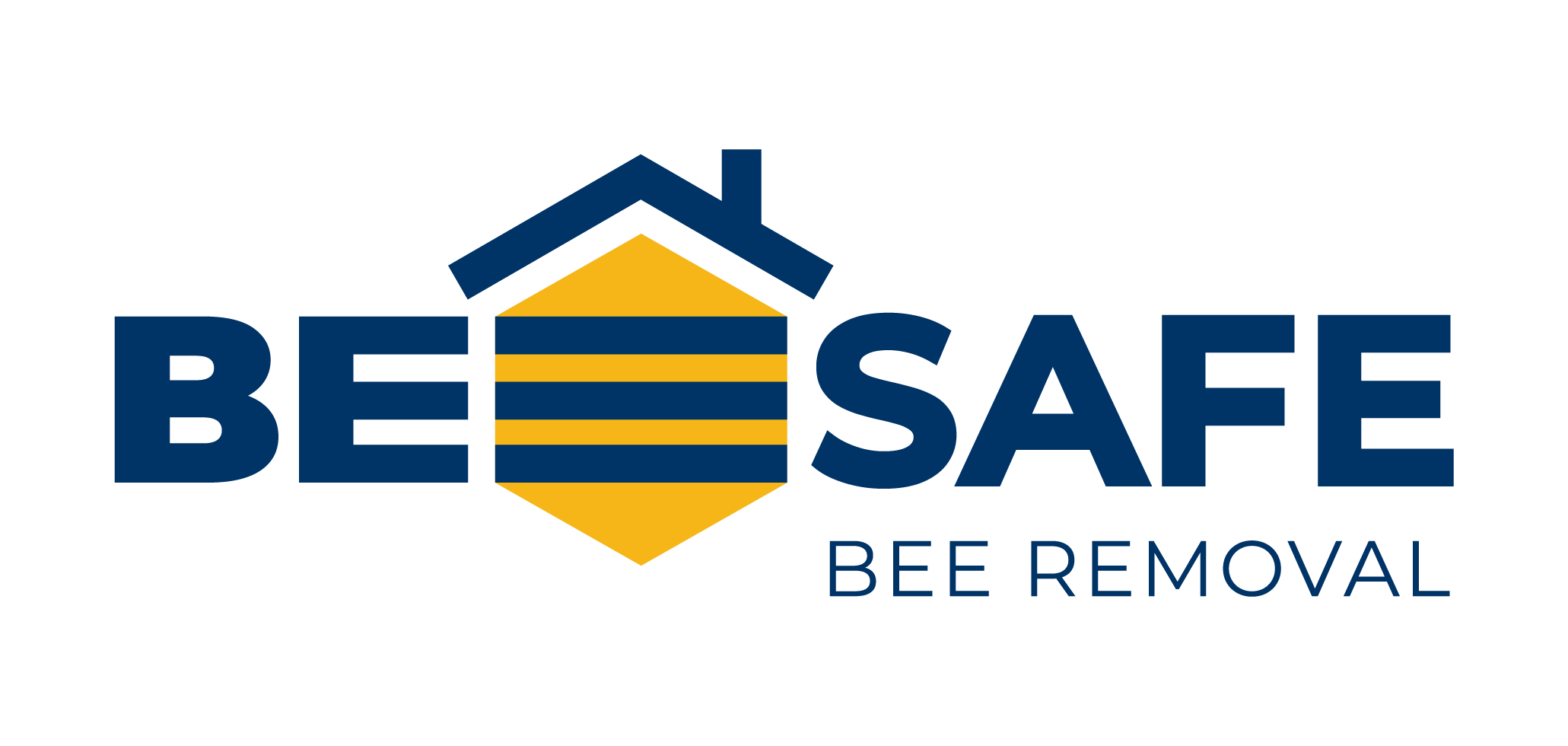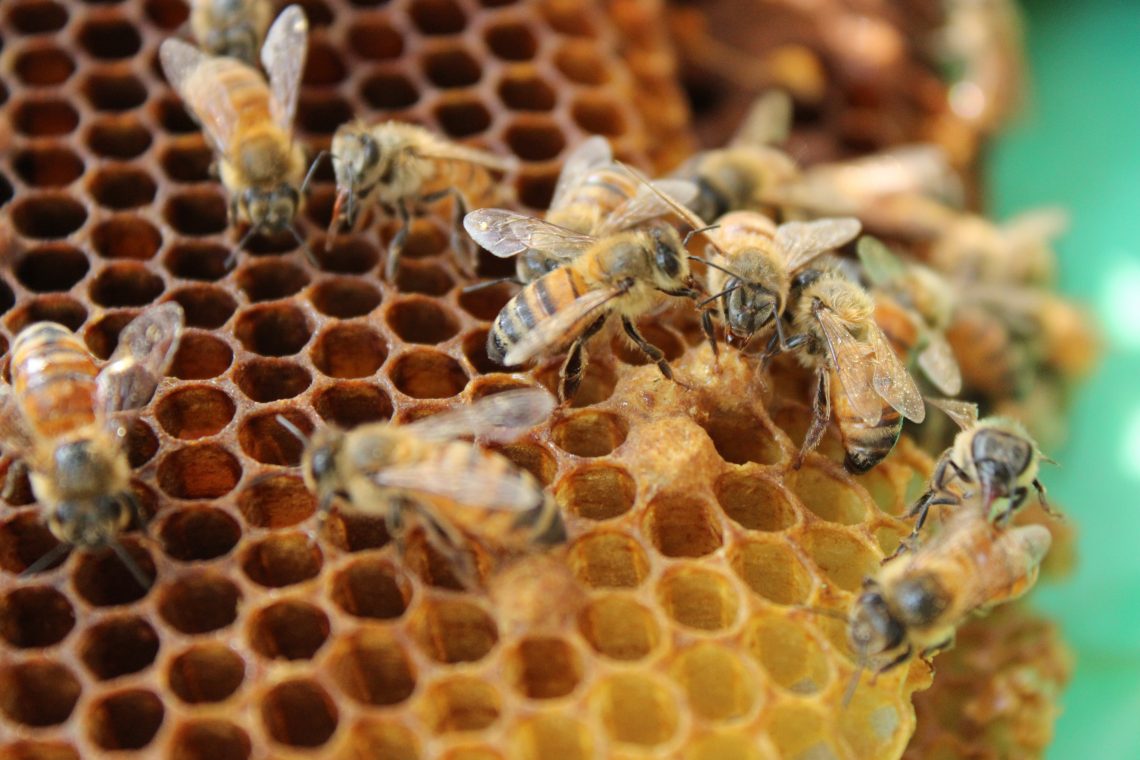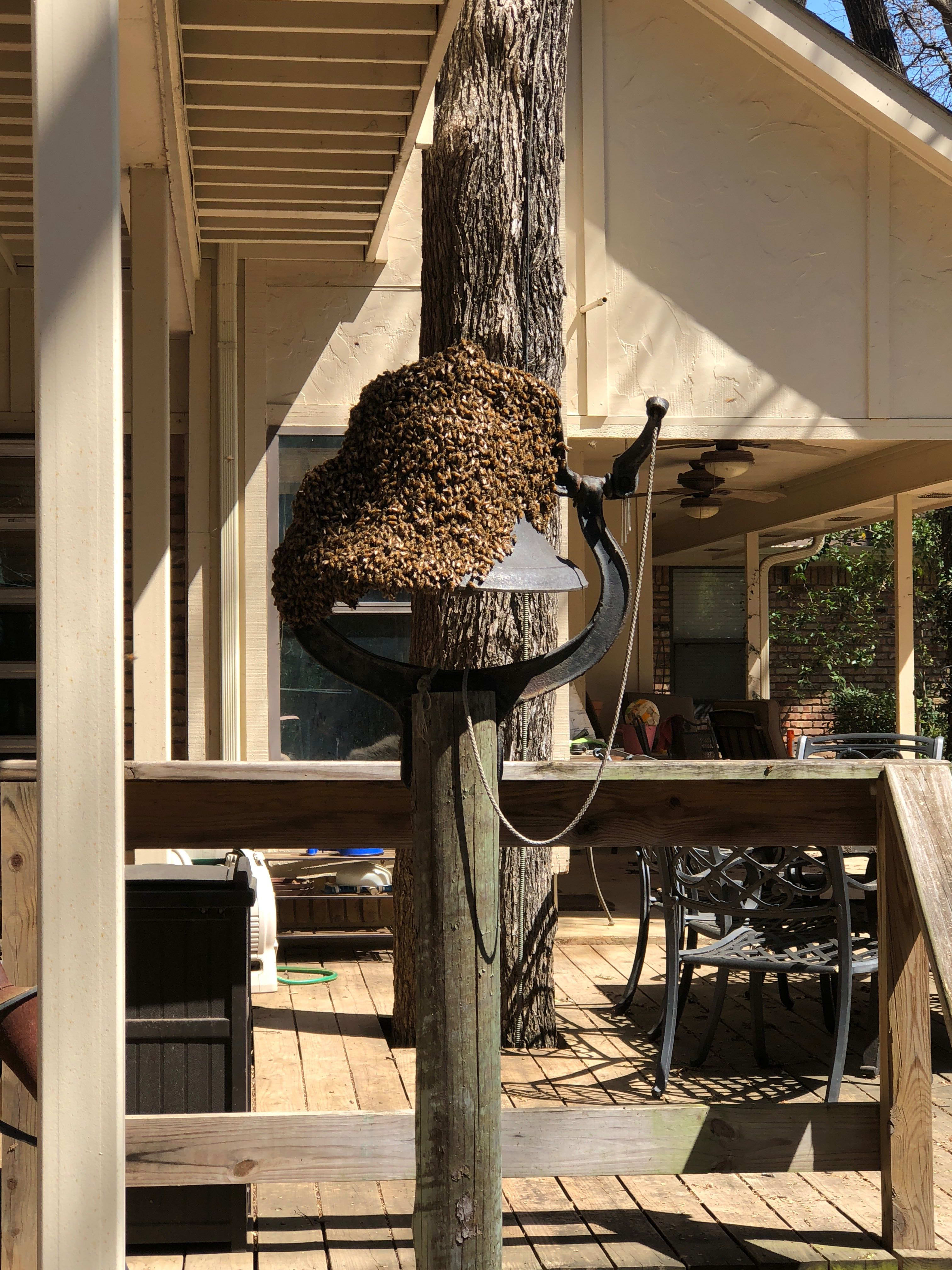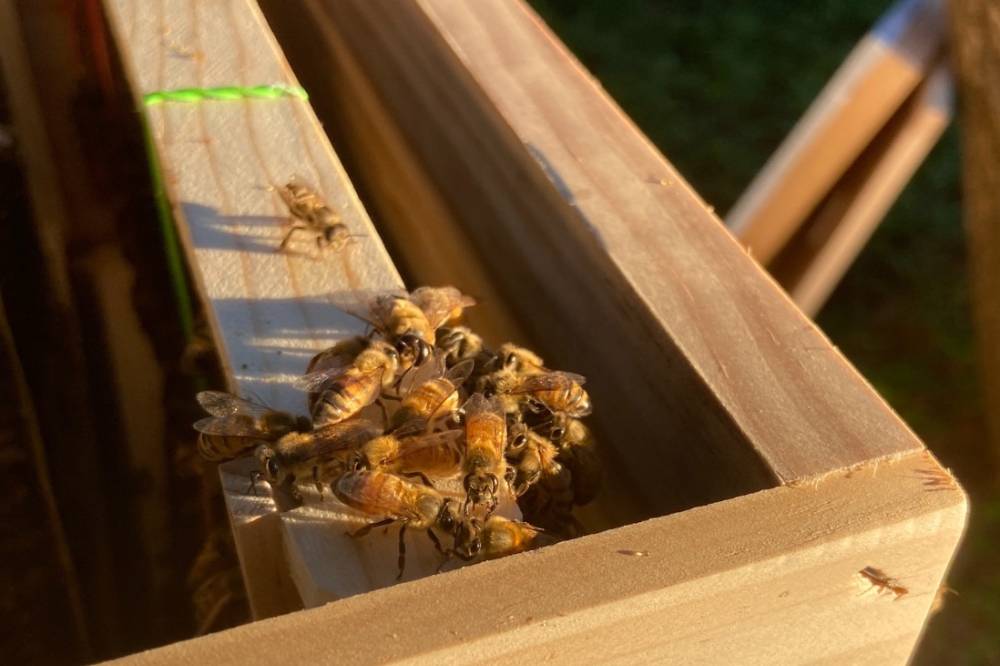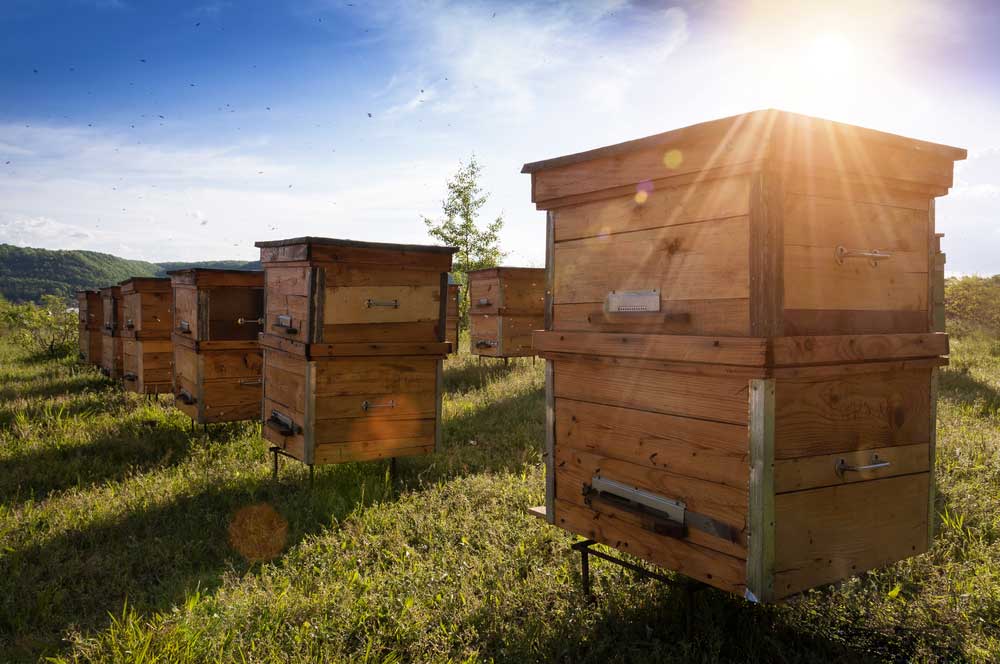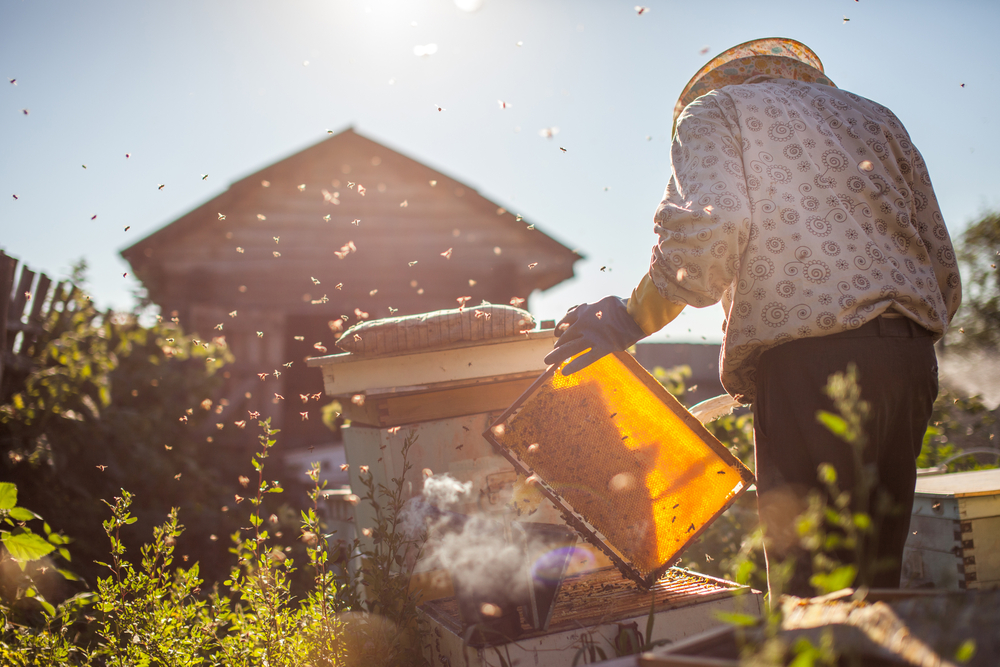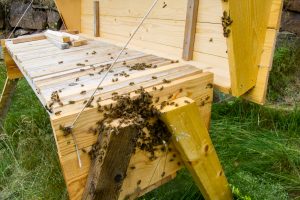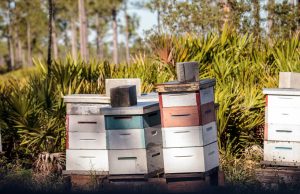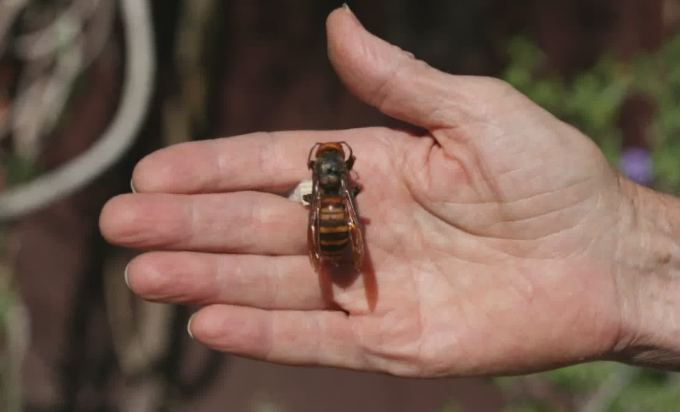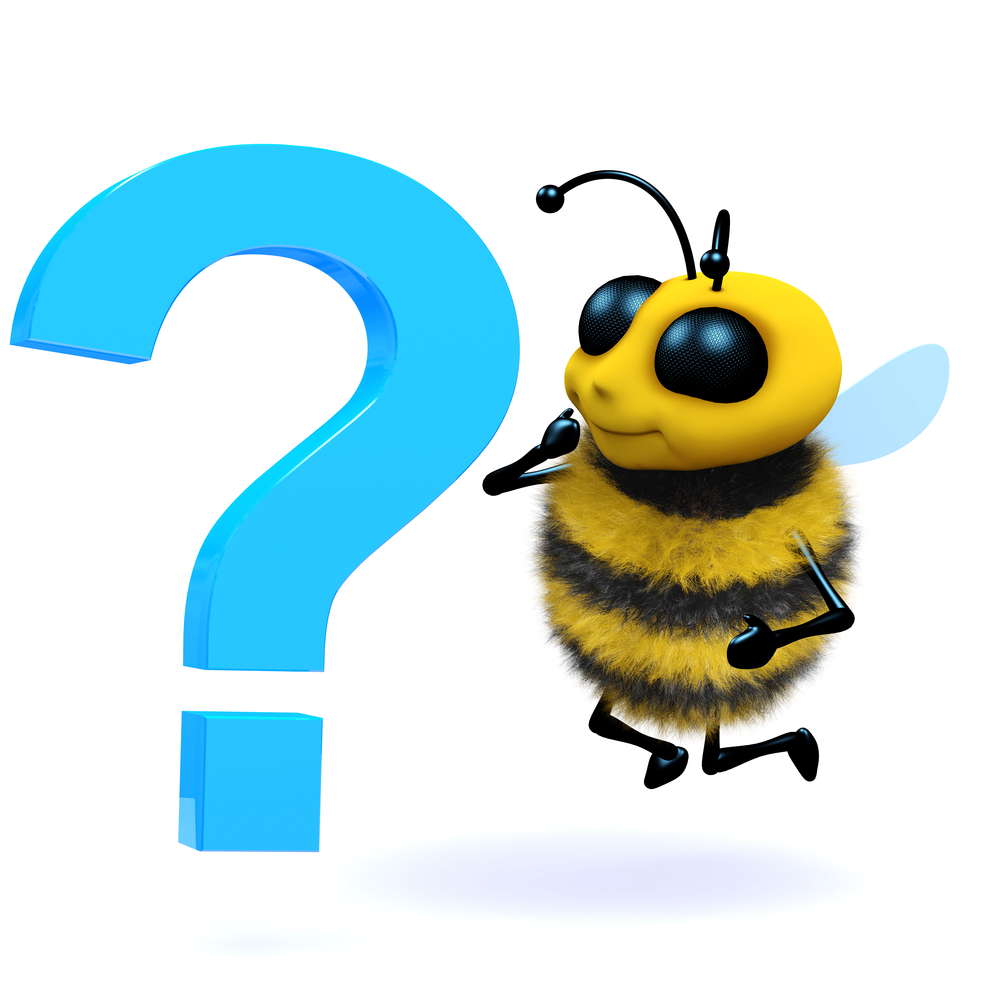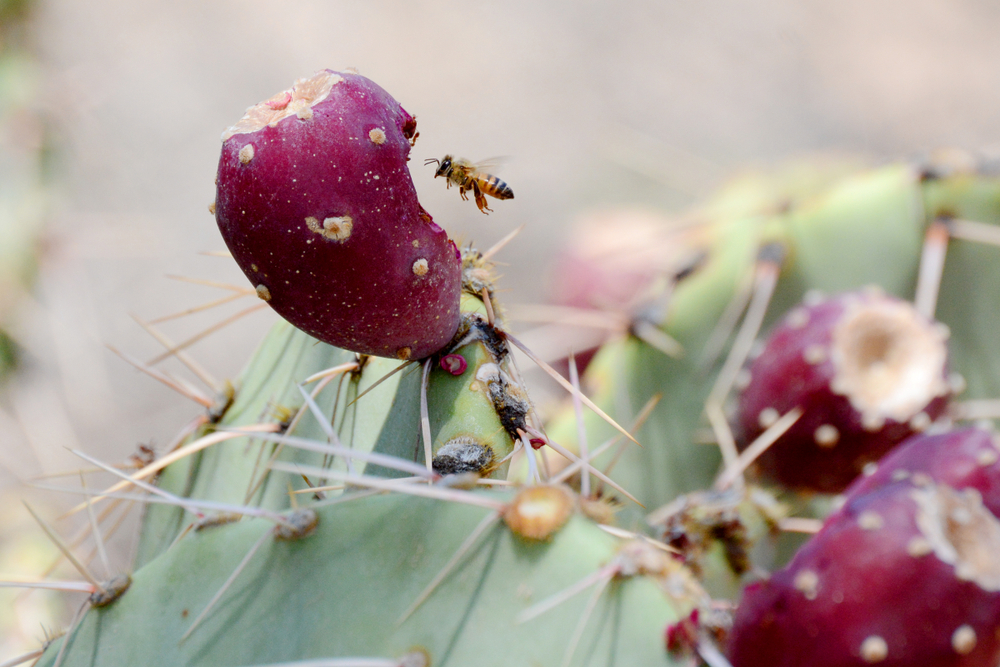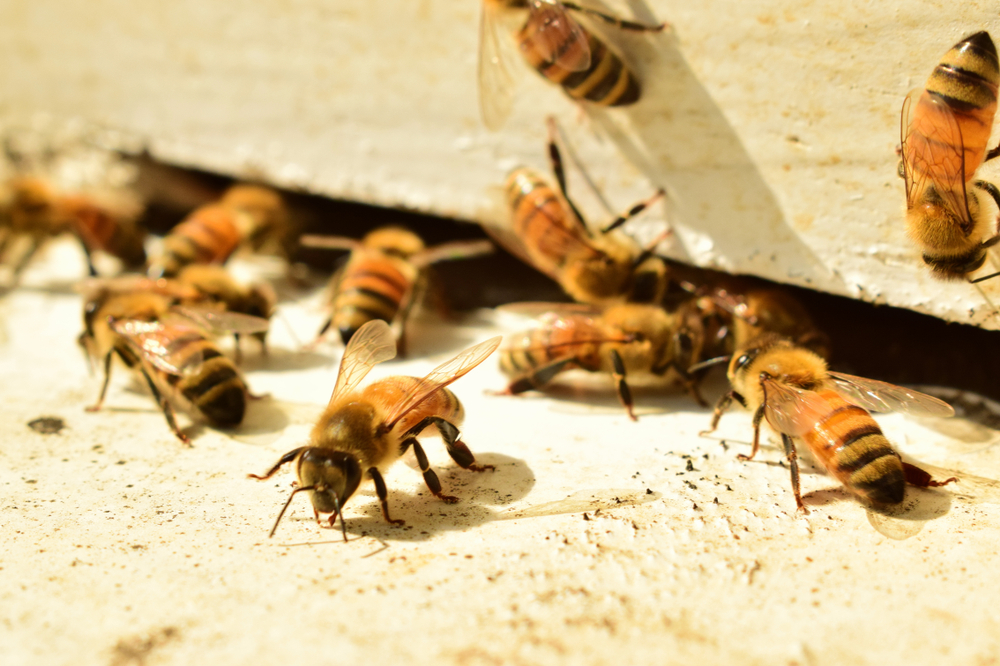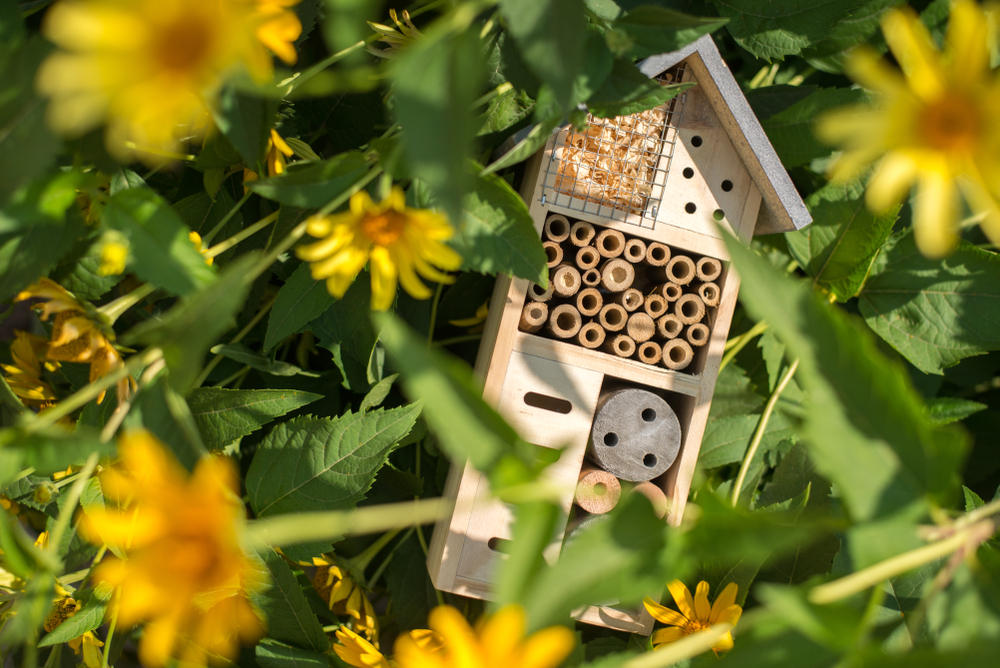Language of the Bees
Humans were thought to be the only species to have abstract language in their movement, but we cannot claim to be the only species now. Abstract language is defined by the meaning from nonverbal messages. With this definition, honey bees have one of the most sophisticated abstract languages of all animalia–nearing human language.
The Waggle Dance
Honeybee workers perform a series of movements, often referred to as the “waggle dance,” to teach other workers the location of food sources more than 150 meters from the hive! Scout bees fly from the colony in search of pollen and nectar. If successful in finding surplus supplies of food, the scouts return to the hive and “dance” on the honeycomb.
The honeybee first walks straight ahead, strongly shaking its abdomen and producing a buzzing sound with the beat of its wings; the distance and speed of this movement communicates the distance of the scavenging site to the others. Communicating direction becomes more complex, as the dancing bee aligns her body in the direction of the food, relative to the sun–which changes throughout the day. The entire dance pattern is a figure-eight loop, with the bee repeating the straight waggle each time it circles to the center.
Honeybees also use two varieties of the waggle dance to direct others to food sources closer to home. The round dance, a series of narrow, circular motions, alerts colony members to the presence of food within 50 meters of the hive. This dance only communicates the relative distance of the supply, not the direction. The sickle dance, a crescent-shaped pattern of moves, alerts workers to food supplies within 50-150 meters from the hive, functioning similar to the round.
After performing the waggle dance, the scout bees may share some of the foraged food with the following workers, to communicate the quality of the food supply available at the location.
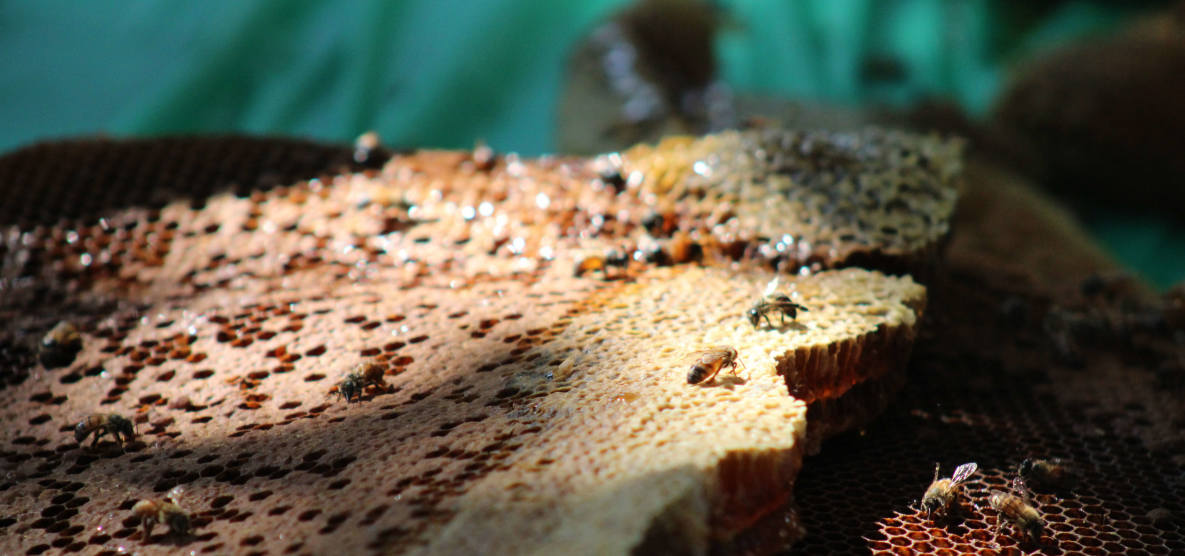
Discovery
The honeybee dance was observed and noted by Aristotle as early as 330 B.C. Karl von Frisch, a professor of zoology in Munich, Germany, earned the Nobel Prize in 1973 for his groundbreaking research and explanation on this dance language. Frisch’s The Dance Language and Orientation of Bees, published in 1967, presents fifty years of research on honeybee communication.
Odor Communication
Besides the waggle dance, honeybees use odor cues from food sources to transmit information to other bees. Some researchers believe the scout bees carry the unique smells of flowers they visit on their bodies, and that these odors must be present for the waggle dance to work. Using a robotic honeybee programmed to perform the waggle dance, scientists noticed the followers could fly the proper distance and direction but were unable to identify the specific food source present there. When the floral odor was added to the robotic honeybee, other workers could locate the flowers.
Odor cues also transmit important information to members of the honeybee colony. The queen bee produces a unique odor that tells the community she is alive and well, which wafts throughout the hive from bees’ wings passing the scent along. When a queen is introduced to a colony, the bees must get familiar with her smell to recognize her as their own. To help with the transition, beekeepers will keep a new queen in a separate cage within the hive for a few days.
Also, pheromones produced and secreted by the queen control reproduction in the hive. She emits pheromones that keep female workers disinterested in mating, while also using pheromones to encourage male drones to mate with her.
Hive Defense
The waggle dance is not just used for pointing to food, though; they communicate incoming attacks. As a wasp approaches, the honey bees vibrate and perform round dances to warn of nearby danger. Workers will rush for any nearby foul odor-producing fauna; anything that would deter predators from approaching the hive will be smeared near the entrance. Their dance of beats, buzzes, and movement allows for quick dissemination of the warning, enabling immediate action when the hive is threatened.
Hormones play a role in the defense of the hive as well. After stinging, a worker honeybee produces a pheromone that alerts its fellow workers to the threat. That pheromone is why a careless intruder may suffer numerous bee stings if a honeybee colony is disturbed.
Linguistics: Waggle’s Sophistication
Why is the waggle dance so accurate? More so, does the waggle dance allow for more messages than just pointing to food? How close is it to language, as we humans see it?
Bees have “words” with the buzzing and length of dances; bees have grammar for the order in which they communicate, to get attention and walk through instructions in order; bees have rules for how they address others.
The only real differences between our languages and theirs is that ours is learned and limitless, while theirs is known from birth and has limits–though we are not exactly sure what those limits are (scientists thought the waggle just communicated food until they proved a bee warned its hive of a wasp).
